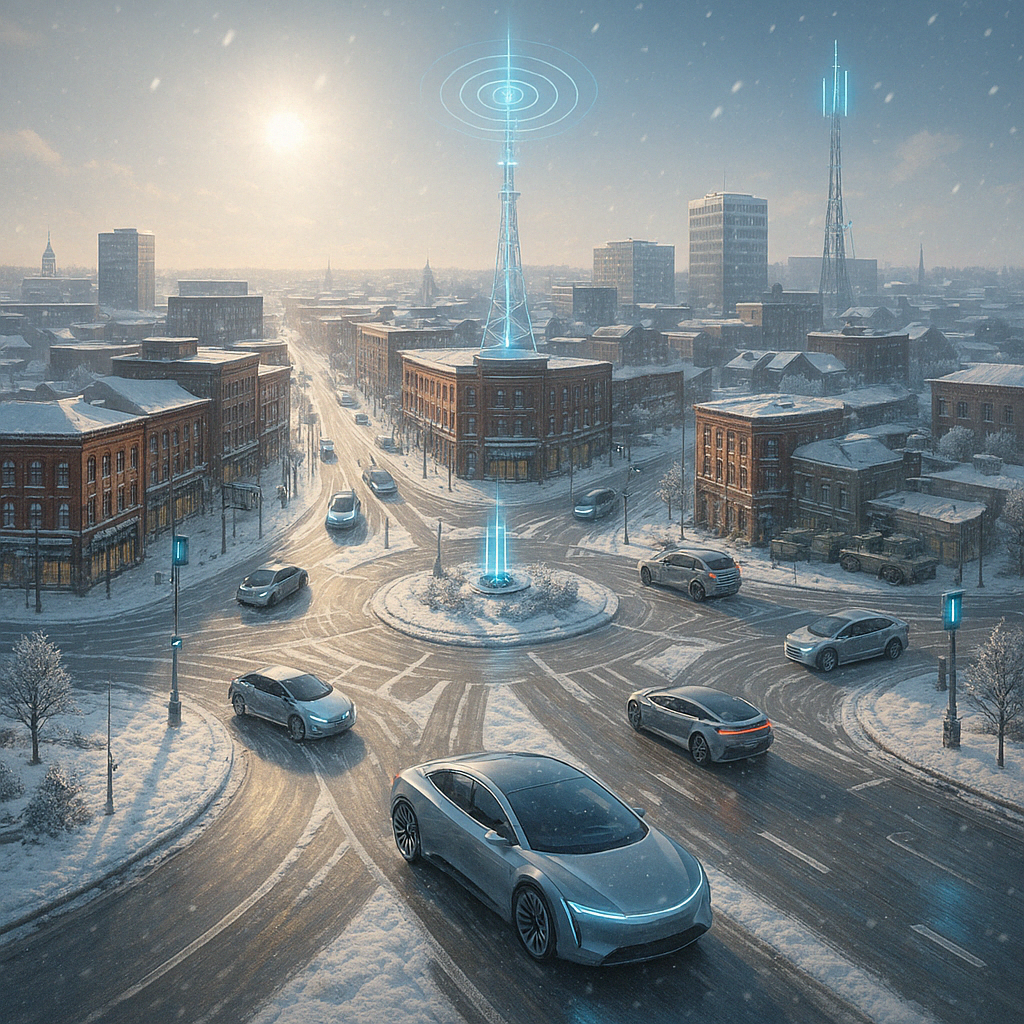
Watertown New York; City of the Future By Hans Wilder
Watertown: America’s Self-Driving Test City
By Hans Wilder, Watertown NY – for Digital Media USA
Introduction: The Flower Blossom City
Watertown, NY, long celebrated for its resilience, historic charm, and industrial grit, is uniquely poised to become America’s proving ground for autonomous vehicle technology. As a tech entrepreneur born and bred in this town, I’ve seen the future—and it has four wheels, no driver, and it knows how to handle lake-effect snow.
Why Watertown? Look at a city map. Downtown sits right in the middle, like the heart of a flower, and every neighborhood stretches outward like petals. It’s a radial layout—dense, navigable, and perfect for controlled driving experiments in real-world conditions.
With our grid-like street core, tightly knit communities, and suburban spokes, Watertown is a living lab just waiting for autonomous vehicles (AVs) to take their test drives. And unlike some sunshine-soaked beta test zones, we’ve got snow. Lots of it. If your robot car can make it here, it can make it anywhere.
Why Watertown is Built for AV Testing
1. City Layout Like a Simulator Grid
Watertown’s urban design is practically made for AV testing:
- A compact, centralized downtown with walkable intersections.
- Radial street expansion into suburban-style outer loops.
- A blend of narrow residential streets, wide avenues, and commercial zones.
- Clear lane markings, defined curbs, and a manageable volume of traffic.
This variety allows AV systems to be tested in every type of real-world urban and suburban environment without leaving city limits.
2. Four-Season Testing Ground
Forget Phoenix or Miami. AVs must handle all conditions, and Watertown delivers:
- Snow, slush, ice, and road salt
- Rain, fog, and rapidly changing weather
- Blazing sun and dark winter nights
Add in our historic buildings, alleyways, drive-throughs, and seasonal events (like parades and farmers markets), and you’ve got a full spectrum test matrix.
3. Right-Sized Population
Watertown has ~25,000 residents—big enough for diverse data collection, small enough to manage risk. It offers real-world pedestrian traffic, school zones, roundabouts, and construction detours, without the chaos of a metro like Chicago.
Infrastructure, Education, and Proximity Advantages
Smart Infrastructure Potential
Watertown could easily deploy smart traffic signals, 5G nodes, and road sensors due to its compact size and connected street system. With small-scale investment, the city could become a “Smart Grid Streets” pilot.
Educational Support
Jefferson Community College and nearby SUNY campuses (Potsdam, Canton, Oswego) can supply:
- Robotics, computer science, and data analytics students
- Internship pipelines
- Research partnerships for AV behavior, safety, and ethics
Watertown could serve as a training ground for future AV engineers.
Military Synergy
Fort Drum is just up the road. The military is already exploring autonomous logistics and vehicle AI. With DoD collaboration, Watertown could test:
- Autonomous convoys
- Snow-capable military support AVs
- Civil-military vehicle interface systems
This opens the door for federal research funding and national pilot programs.
Economic Growth and Local Benefits
- New Jobs: Engineering, data analysis, infrastructure installation, maintenance
- Startups: AV hardware, mapping systems, cold-weather tire tech, AI sensors
- Real Estate: Demand for test zones, garages, charging depots
- Tourism: Come see the city where robot cars learned to drive in the snow!
- Branding: Watertown becomes “The City of the Future. Again.”
Policy Steps to Make it Happen
- Establish an AV Test Zone: Define a city-wide autonomous vehicle testing area, in coordination with NYSDOT and AV manufacturers.
- Apply for Grants: Target federal DOT smart mobility grants, DoD research partnerships, and NYSERDA clean transport funding.
- Form a Public-Private Coalition: Bring together city leaders, Fort Drum, local colleges, and AV firms.
- Develop the Infrastructure: Install smart intersections, vehicle-to-infrastructure (V2I) communication beacons, and high-speed internet.
- Host a Summit: Invite national AV developers to a “Snow & Sensors” summit in Watertown. Let them see our roads and test our terrain.
Conclusion: Let Watertown Drive the Future
We’re not asking to be Silicon Valley. We’re asking to be Silicon Snowplow. A cold-weather testbed, a living lab, and a launchpad for American-made autonomy.
With the right support, the right partners, and the will to innovate, Watertown can lead the next chapter of mobility.
It’s time to stop looking for the perfect place to test AVs and realize: it already exists.
It’s here. It’s Watertown.
— Hans Wilder, Reporting from Watertown, NY for Digital Media USA
WatertownNY,#SelfDrivingCity,#AutonomousVehicles,#SnowTestedTech,#SmartCityUSA,#SiliconSnowplow,#AVInnovation,#FutureOfMobility,#TechInTheNorth,#WatertownRising



